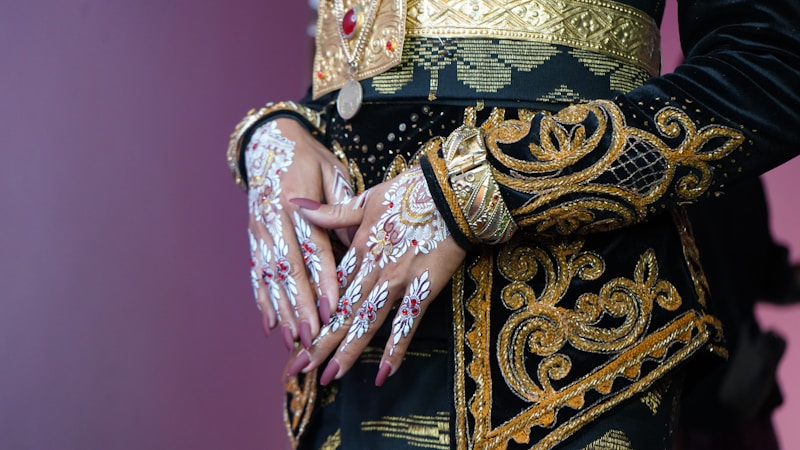Cultural Accessories in Weddings: A Celebration of Heritage and Elegance
Weddings are a significant milestone in people's lives, and they reflect the couple's values, beliefs, and cultural heritage. One of the most fascinating aspects of weddings is the incorporation of cultural accessories that enhance the beauty of the ceremony while serving important symbolic functions. In this article, we will explore various cultural accessories commonly used in weddings around the world, their meanings, and how they contribute to the celebration. We will also answer some frequently asked questions regarding these beautiful elements.
Understanding Cultural Accessories in Weddings
Cultural accessories vary widely depending on geographical location, cultural traditions, and religious beliefs. These accessories can include everything from jewelry and clothing to decorative items and rituals that play a crucial role in the wedding ceremony. By understanding the significance of these elements, couples can create a wedding ceremony that honors their heritage while also being uniquely personal.
The Significance of Cultural Accessories
Cultural accessories in weddings often symbolize important values such as love, commitment, family, and belonging. They serve to connect the couple with their roots and can also be a way to honor deceased family members. Below is a table summarizing some common cultural accessories and their meanings:
| Accessory | Cultural Origin | Meaning |
| Wedding Veil | Western | Purity and modesty |
| Henna | Indian | Joy and good luck |
| Traditional Dress | Various cultures | Heritage and identity |
| Garter | Western | Fertility and good fortune |
| Chuppah | Jewish | New home and marital shelter |
| Libation Ceremony | African | Honoring ancestors and asking for blessings |
Exploring Popular Cultural Accessories
1. The Wedding Veil
The wedding veil is a classic accessory used in Western weddings. Traditionally, it symbolizes purity, modesty, and a woman's transition from childhood to adulthood. Many brides choose to wear a veil over their face during the ceremony, which is then lifted by either their father or the groom, symbolizing the unveiling of the bride.
2. Henna
In Indian weddings, the application of henna is not just a beautifying ritual but also a cultural rite of passage. The intricate designs are commonly applied to the bride’s hands and feet, representing joy and good luck for the upcoming marriage. This artwork often serves as a bonding opportunity among female relatives and friends, transforming the henna party into a joyous celebration filled with music and laughter.
3. Traditional Dress
Each culture has its unique style of wedding attire that reflects its heritage. For instance, a Chinese bride might wear a vibrant red qi pao adorned with gold embroidery, symbolizing prosperity and happiness. In contrast, a Scottish groom may choose to wear a kilt, representing his clan’s tartan. Wearing traditional attire allows couples to honor their culture while expressing their personal style.
4. The Garter
The garter is another traditional accessory that holds historical significance in Western weddings. Historically, it was believed that the garter could bring good luck and fertility to the couple. Today, the traditional garter toss at the reception often serves as a lighthearted moment for guests, and it remains a symbol of love and romance.
5. The Chuppah
In Jewish weddings, the chuppah is a significant cultural accessory that symbolizes the couple’s new home together. This canopy can be made from various materials, including fabric or floral arrangements, and is often held up by family members during the ceremony. Standing beneath the chuppah signifies protection and the sacredness of the marriage bond.
6. Libation Ceremony
In many African cultures, a libation ceremony is performed during weddings to honor ancestors and seek their blessings. This involves pouring a liquid (often alcohol such as wine) into a designated container or the earth, accompanied by prayers or ancestral sayings. This act reinforces the idea of family unity and the importance of lineage.
Frequently Asked Questions
What cultural accessories are most common in weddings worldwide?
Common cultural accessories include wedding veils, henna designs, traditional dresses, garters, chuppahs, and libation ceremonies, among many others. Each accessory carries its unique meaning and purpose within the specific cultural context.
How can I incorporate cultural accessories into my wedding?
To seamlessly incorporate cultural accessories into your wedding, start by researching your heritage and discussing it with your partner. Choose elements that resonate with you and align with your personal values. You can blend various cultural accessories or even create new traditions that reflect your unique love story.
Are cultural accessories expensive?
The cost of cultural accessories can vary significantly based on material, craftsmanship, and complexity. Simple accessories like a garter or henna may be relatively inexpensive, while traditional dresses or elaborate decorations may require a more substantial investment. It’s essential to budget accordingly and consider DIY options for personal touches.
Conclusion
Cultural accessories in weddings are not just decorative elements; they embody the couple's heritage, beliefs, and values. By incorporating these elements into their ceremonies, couples not only celebrate their love but also honor their roots. If you are planning a wedding, consider the various cultural accessories discussed and reflect on how they can enhance your ceremony. Remember to stay true to yourselves and connect your choices to your personal story. Ultimately, your wedding is a celebration of love, culture, and community, making it a truly unforgettable experience.
Final Note: As you navigate through the planning process, do not hesitate to reach out to family members or cultural experts who can provide insights into traditional practices. Doing so can enrich your understanding and help you create a day that respects and reflects the beautiful tapestry of your cultural heritage.
